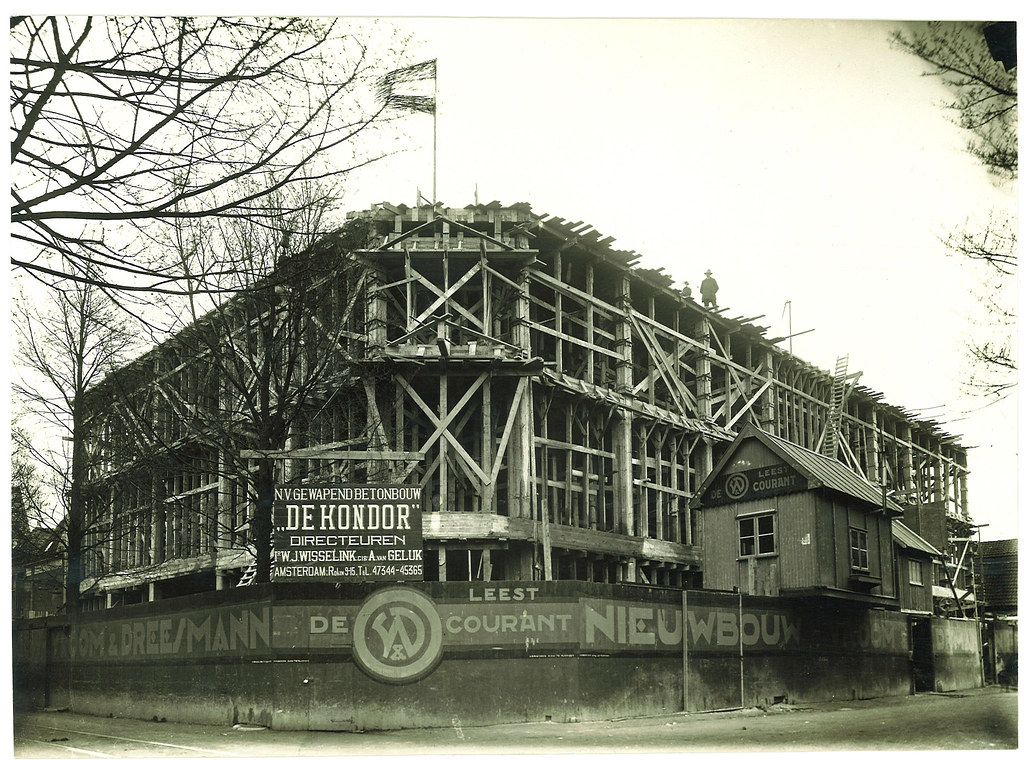How V&D Went Down Posted by Sten on Feb 29, 2016 in Culture, News
Vroom & Dreesmann, or V&D is as Dutch as klompen, or cheese. Every medium to large city in the Netherlands has a V&D in its city center. They sell everything from writing utensils, books to clothing, pans and food. Well, I should rephrase this. Because something bad happened to V&D. As you might already guess from the title: V&D is no more. What happened?
Around two weeks ago, the warehouse could not make a deal with investors, and that meant the end a long struggle. But not just that: it also meant the end of a Dutch classic, a place everybody knows, and many already miss. It meant that hundreds of people suddenly lost their job. And that 62 huge properties in city centers are empty now (read about it this week, here on the blog!).
Before I dive into the story of how V&D went down, I want to go back in time, to the start of a long success story.
Vroom & Dreesmann – How Everything Started
It is the end of the 19th Century. Willem Vroom and Anton Dreesmann each lead a successful workshop in Amsterdam. Through a cousin, Vroom got to know Dreesmann, and they liked each other. Vroom married the sister of Dreesmann’s wife, and so they became brothers-in-law. In 1887, they decided to start a business together – Vroom & Dreesmann. Vroom’s name came first, because he was the older one of the two.
Their sale strategy was products against low, fixed prices, paid in cash. That was quite unusual during that time. Since this strategy works only if you can buy a lot in bulk against very low prices, they needed to have more than just one store. After opening a second store in Amsterdam, the profits stayed low. This was an indication for the two businessmen that the market in Amsterdam was satisfied, and so they went outside the city.
In a few years, Vroom & Dreesmann had expanded to many large cities in the Netherlands, like Rotterdam, The Hague, Utrecht, Arnhem, Maastricht, Den Bosch, and Eindhoven.
One interesting fact about Vroom and Dreesmann is that they were both very catholic. They employed catholic people as far as they could, and always tried to keep the company in the hands of the family. This did not work forever, but it worked for a pretty long time: Only in 1988, Anton Dreesmann, the grandson of the founder, gave up his position of CEO due to health issues.
V&D merged with its other large competitor, the Bijenkorf, in 1998 into a larger conglomerate called Maxeda. Also part of Maxeda were the hardware store Praxis and another competitor, Hema. The success story could not be stopped.
In 2010, V&D was sold to Sun Capital Partners, which kept increasing the number of stores. The latest store opened only last year!
But something happened. The internet revolution came, and V&D went online too late: Only in 2008, they opened a webshop. Stores from H&M and Primark started competing, and it was harder for V&D to sell their clothing line. People started wondering what the V&D actually stood for – they lacked a good personality, which its competitors did have.
And all this had consequences.
The Fall of V&D
In 2013, V&D was writing red digits, and the same in the year that followed. The bank lowered the liquidity of V&D, which led to problems paying rent. And just a year later, on December 31, 2015, the court of Amsterdam declared the bankruptcy of V&D. At that time, V&D had a debt due of 43.5 million euros. The stores stayed open longer, because there was still a possibility of a takeover from another company, or another infusion of investments. After almost two months of negotiations, however, it became clear that there would not be any deal. On February 16, 2016, it was definitely over with V&D. It will be missed!

Build vocabulary, practice pronunciation, and more with Transparent Language Online. Available anytime, anywhere, on any device.
About the Author: Sten
Hi! I am Sten, both Dutch and German. For many years, I've written for the German and the Dutch blogs with a passion for everything related to language and culture. It's fascinating to reflect on my own culture, and in the process allow our readers to learn more about it! Besides blogging, I am a German-Dutch-English translator, animator and filmmaker.






Comments:
Errol:
Very sad, but it’s interesting to hear the story of Vroom & Dreesmann. Thanks!
Graham:
Sad. They sound like a Dutch Marks & Spencer. Marks was a high flyer too and were trusted by many here in Britain, but they’ve lost their way and are still struggling.